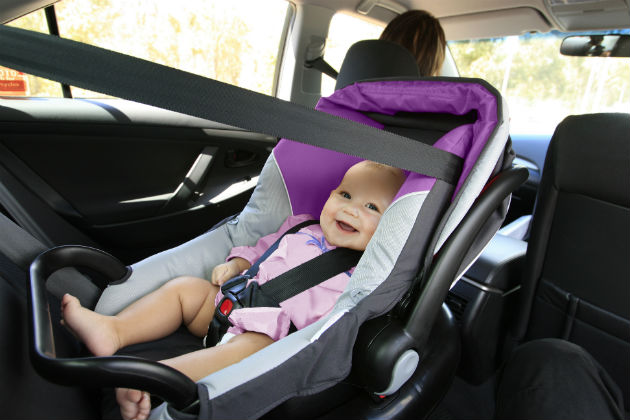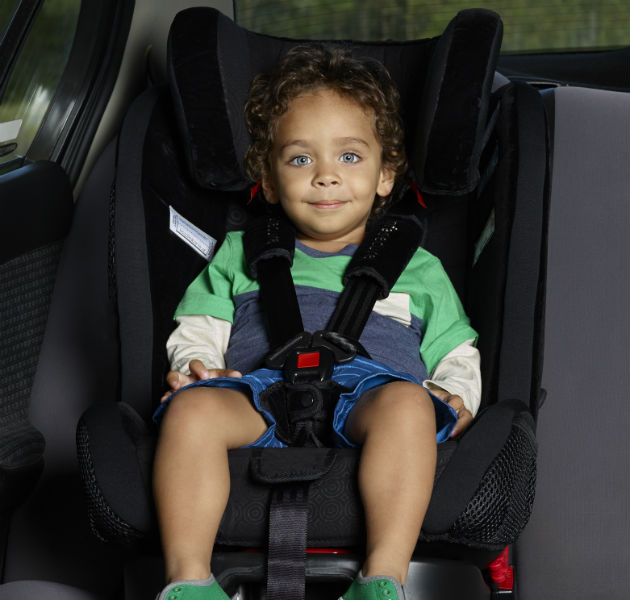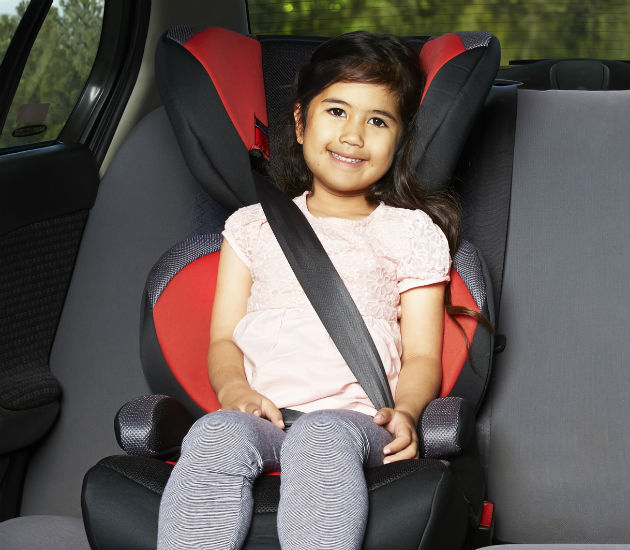It can be confusing to know the right car seat or restraint children need as they grow.
Getting the right car seat or restraint for your child’s development stage can make a huge difference to their safety in a crash. In 2017 the Road Safety Commission said that on average 16 per cent of crashes where children were killed or injured, the child was not restrained correctly.
As well as the safety considerations, there are also the legal ones - if your child is not restrained in the right type of car restraint, you risk being fined.
In WA, the penalty is a $550 fine and the loss of four demerit points.
We’ve pulled together some easy tips to cut through the confusion and put you on the path to finding a the right car seat.

The right child car restraint for your child
There are several different types of restraints that are suitable according to a child's weight, size and age. Remember, it's safer to calculate your child's needs by height and weight than by actual age.
According to WA legislation, children younger than six months must be placed in a rearward facing child car seat, baby capsule or convertible child car seat that is property fastened and adjusted.
Rearward facing child car seats provide children with the best protection in the event of a crash, and its best to place infants in rearward facing seats for as long as possible, particularly if your child fits within the shoulder height markers.
In WA, all children over the age of six months must be restrained in a properly fastened and adjusted child restraint (with an inbuilt harness if it's forward facing until the age of seven.
From the age of four, children can transition to a booster seat with a properly fastened and adjusted seat belt or child harness. Remember, keep your child in a booster seat until they've reached the maximum height for the seat.
From the age of seven, children can legally remain in a booster seat or move into a regular seat with an adult seat belt, which is designed to safely restrain occupants with a minimum height of 145cm. The child must be tall enough to sit comfortably with their knees bent over the edge of the seat, the lap belt must lie across the top of their thighs and the sash must sit over their shoulder, in order for them to safely use an adult seat belt.
The best place to confirm the latest government requires and recommendations is the Road Safety Commission.

Special purpose car seats
Some children with disabilities and medical conditions, such as cerebral palsy and autism, are unable to travel in ‘off the shelf’ seats. Special purpose car seats offer an extensive range of features and optional accessories not available on Australian standard car seats, and also cater for older and larger children. For example, this could include extra postural support, anti-escape options, or swivel bases to help parents with getting children in and out of the car. MACA publishes a national register of special purpose car seats that have been independently assessed as part of its Australian Safety Assessment Program.
Which one to buy?
The next consideration is which one to buy – and there are many to choose from.
Be wary of buying a second-hand child car restraint. Even if it doesn't look damaged, the seat might have structural damage and may no longer be safe to use. The restraint should not look worn and do not buy a restraint that is more than 10 years old.
Consider safety ratings over the price. Just because a seat or restrain is expensive doesn't mean it ranks well on the safety guides. At a minimum, all restraints must meet the Australian Standard AS/NZS1754 so do your research and compare ratings before you buy.
Another thing to consider is that not all child car restraints are equal in size. Measure the seat up to check whether the restraint you're looking at will fit in your vehicle, especially if you need more than one.
Installation
Assuming that you have the correct anchorage points, it’s a great idea for a professional to fit the child car seat properly into your car.
The fitter will take you through the process, so you can watch and learn how to make sure yours is properly placed and attached.
If you don’t have the correct anchorage points, or need extra points installed, which sometimes happens with older cars, you will need to visit a specialist fitter.
Always follow manufacturer’s instructions carefully when fitting and using your child car seat.

Using the child car restraint
Two in three child car restraints aren’t used correctly, according to the Child Restraint Evaluation Program.
When you use the child car restraint, it is recommended that you:
- Fit the straps so they’re straight and in flat contact with the child. Check to make sure the harness straps are not twisted or caught.
- Firmly fasten the straps for a comfortable but firm fit with no slack.
- Always adjust the strap length to fit changes of clothing and growth.
- In booster seats, the sash belt should cross your child's should and be in contact with their chest. The sash belt should sit low across their pelvis.
If you need to take a taxi or rideshare vehicle, ask for one with the appropriate child car restraint. Although children under the age of one year can now legally be held in the lap of their parent or caregiver, children between the ages of one and seven years can be restrained in full adult seatbelts if they are seated in the back row of seats. It is always safest to place a child in a child car seat.
Get more information
Child car restraints significantly reduce the risk of death or serious injury to a child in a crash. If you need help, you can call the Child Restraint Information Line on 1300 780 713 between 9am and 2pm Monday to Friday.
You can also visit the Road Wise website or Kidsafe WA for more information.
For information on safely transporting children with disabilities and medical conditions, visit Mobility and Accessibility for Children in Australia (MACA).
Cover for your car Whether you’ve got a trusty hatchback or the latest SUV, compare our car cover options to find what suits you best. Disclaimer: Issued by RAC Insurance Pty Limited. Check the PDS & TMD at rac.com.au
This product is issued by RAC Insurance Pty Ltd. Benefits are subject to policy conditions and PED Guide. Before you make a decision, please check the PDS and TMD to see if the policy is right for you. Limits and exclusions apply.
Last updated July 2018
